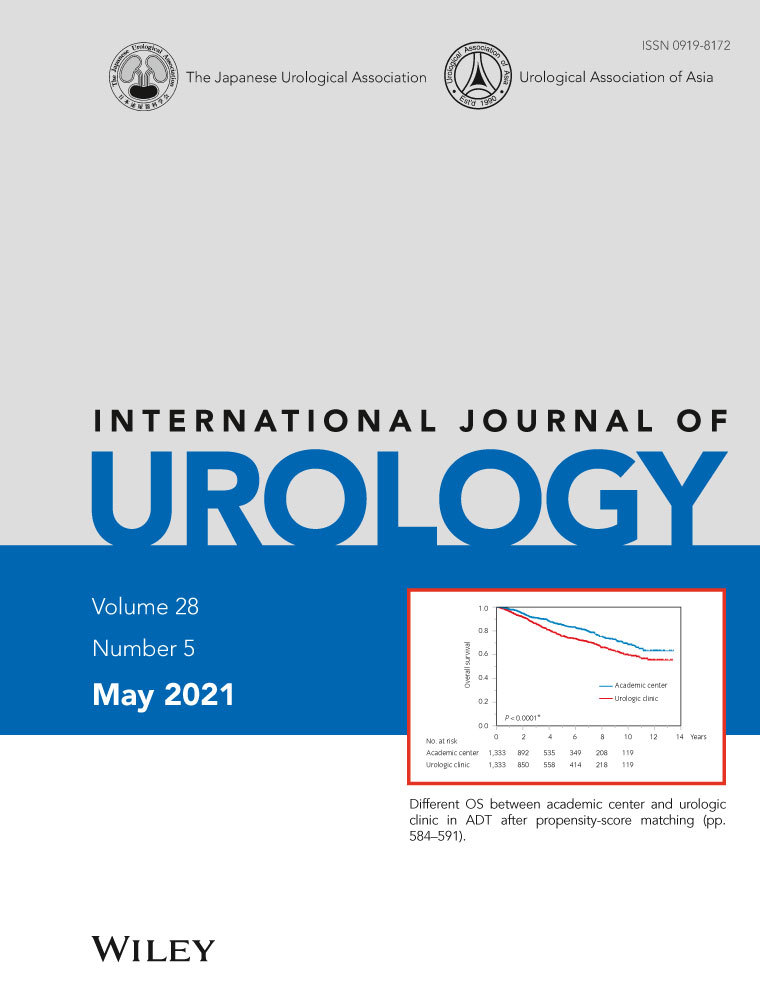Ambulatory robot-assisted laparoscopic radical prostatectomy with extended recovery by total extraperitoneal approach
Abstract
Objective
To evaluate the feasibility of performing robot-assisted laparoscopic radical prostatectomy in an ambulatory with extended recovery setting by using a total extraperitoneal approach.
Methods
Patients with low- to intermediate-risk, prostate cancer were prospectively recruited in the ambulatory robot-assisted laparoscopic radical prostatectomy with extended recovery by total extraperitoneal approach group (n = 30), and a matched-pair inpatient surgery control group by total extraperitoneal approach (n = 20). Objective discharge criteria were based on the postanesthesia discharge scoring system. All patients underwent preoperative counseling on preoperative preparation and postoperative care.
Results
There were no statistically significant differences between the ambulatory with extended recovery-total extraperitoneal approach and inpatient-total extraperitoneal approach groups in patient factors (age, body mass index, American Society of Anesthesiologists score, Charlson Comorbidity Index), disease factors (prostate-specific antigen, clinical T stage, biopsy Gleason score, prostate volume) and peri-operative parameters (operative time, blood loss, Trendelenburg angle). All total extraperitoneal robot-assisted laparoscopic radical prostatectomy patients (ambulatory with extended recovery and inpatient surgery groups) met the postanesthesia discharge scoring system discharge criteria ≤23 h from admission. The mean hospital stays for ambulatory with extended recovery-total extraperitoneal and inpatient-total extraperitoneal groups were 20.3 and 52.4 h, respectively (P < 0.001). A total of 29 of 30 patients (97%) in the ambulatory with extended recovery-total extraperitoneal group were discharged ≤23 h of admission.
Conclusions
This is the first prospective evaluation of robot-assisted laparoscopic radical prostatectomy by the total extraperitoneal approach, showing that the short-stay ambulatory with extended recovery approach is safe, feasible and with a high success rate. Total extraperitoneal surgical approach is a critical factor for the success of the ambulatory with extended recovery protocol.
Conflict of interest
None declared.




